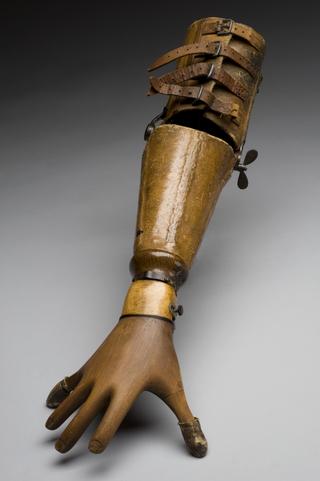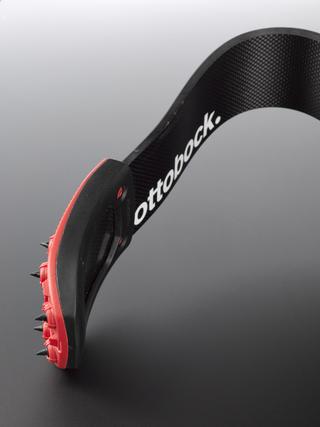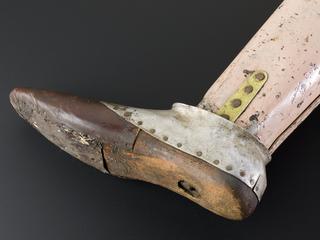
First ever microprocessor controlled prosthetic used outside of clinical tests
- Made:
- 1977-1990 in Southampton
Viennatone hand prosthesis with circuit board controllers, power supply, bag and joystick box that can mimic the electrical activity of a person's muscles, used in research as part of the Southampton Hand project at the School of Electronics and Computer Science, University of Southampton, England, 1977-1990
Developed by Peter Kyberd, this was the first time that a microprocessor controlled prosthetic hand was used outside of clinical tests. In 1984, Mohammad Barkhordar, developed a microprocessor controller, meaning the hand was programmable, with a sensor built into the tip of one finger. Mohammad's work built on a commercially available prosthetic hand made by the Austrian hearing aid company, Viennatone. Peter developed the design further for clinical applications and created a printed circuit board based on Mohammad's work. The hand was controlled by a joystick box programmed to open, close, hold, flex, relax, and extend.
Begun by Professor Jim Nightingale, Professor of Control Engineering at the University of Southampton in the 1960s, the Southampton Hand project ran for over 50 years. Many engineers interested in developing new types of prosthetic arms worked on the project, each adding their own advances to the project. Inspired by how our brains and hands communicate they aimed to make a prosthetic arm that was easy for users to control. The user initiates movement by thinking, which activates the muscles in their arm. This is detected and it opens and closes the hand. Sensors on the hand detect what shape object is within the hand and the microcontroller selects the grasp that is needed. This work led to the first microprocessor controlled prosthetic hands to be used in the outside of clinical trials.
Details
- Category:
- Orthopaedics
- Object Number:
- 2021-1260
- Materials:
- plastic, metal and electronic components
- Measurements:
-
overall (charging box): 60 mm x 120 mm x 47 mm,
overall (arm including wire attachment): 100 mm x 180 mm x 450 mm,
overall (red bag, grey box): 17 mm x 203 mm x 147 mm,
overall (control box): 110 mm x 147 mm x 197 mm,
- type:
- prosthetic hand




